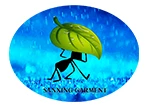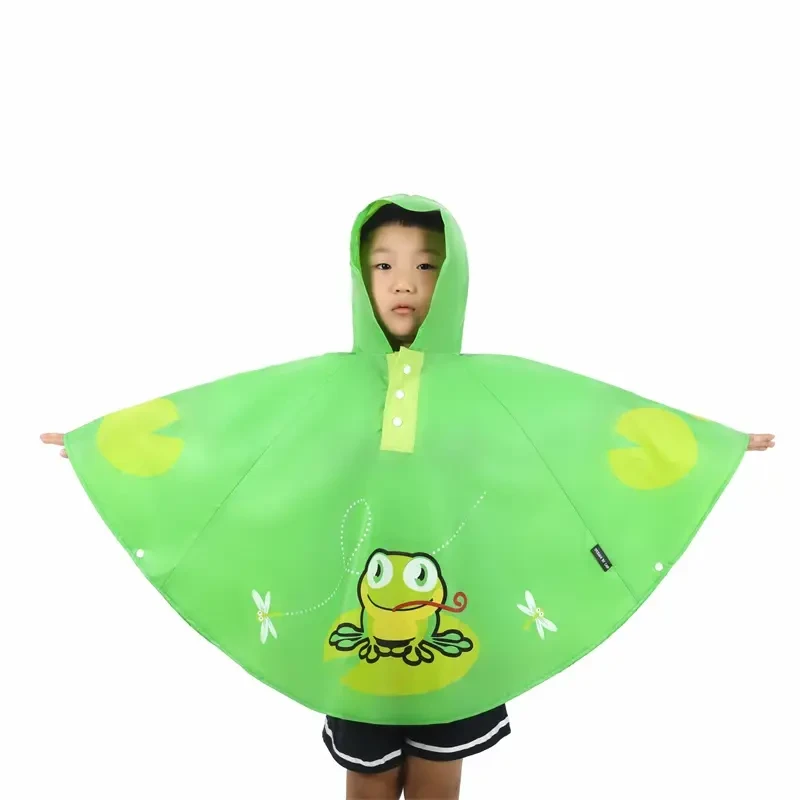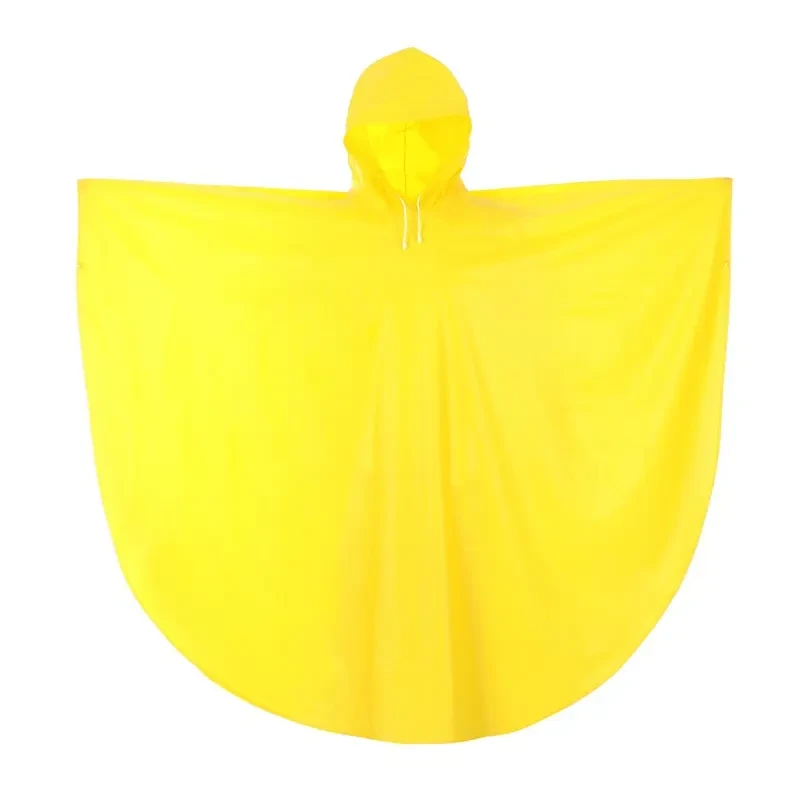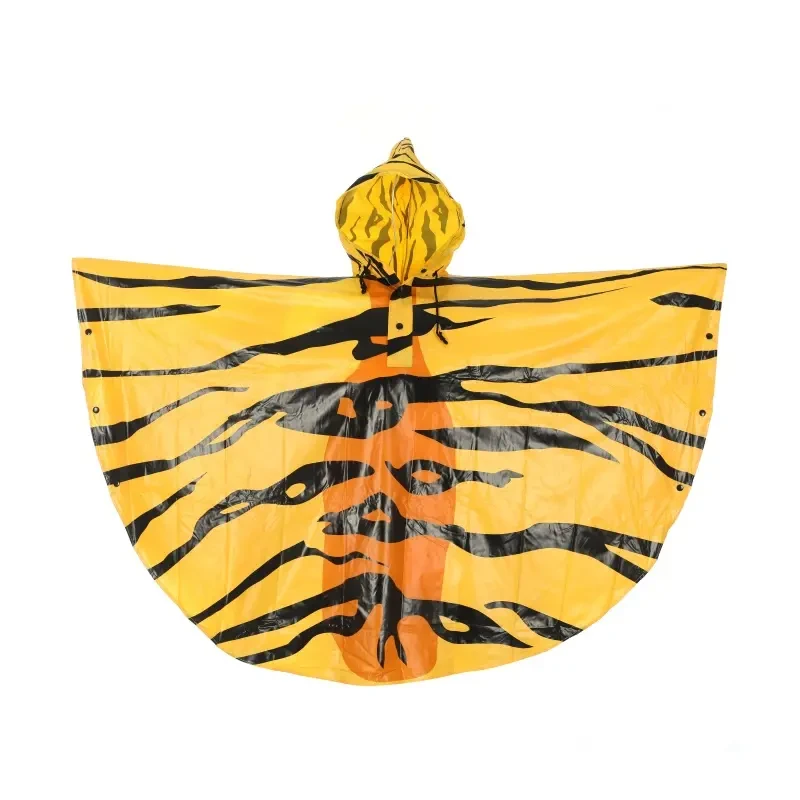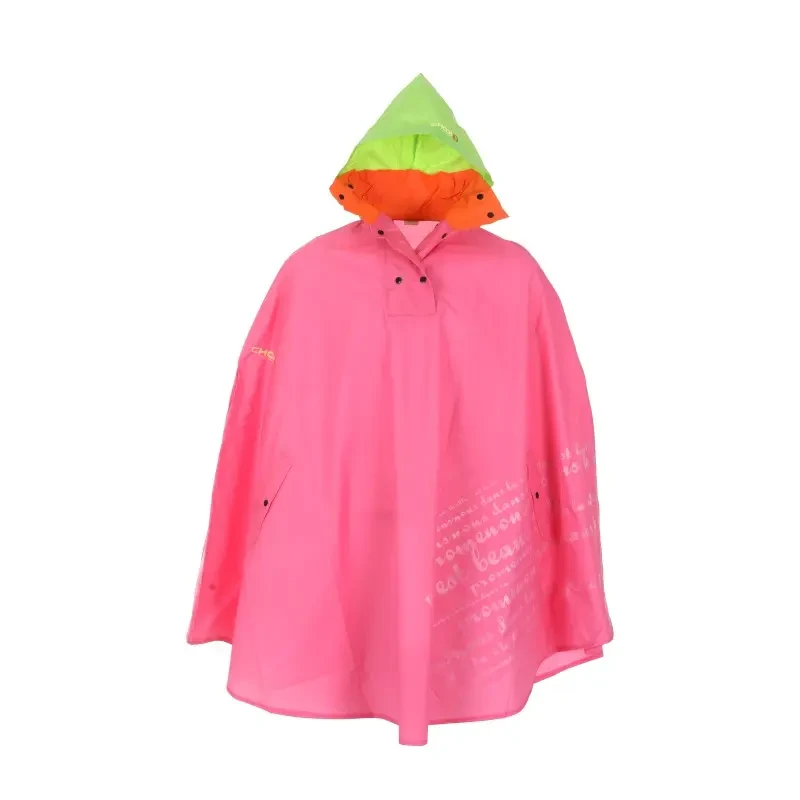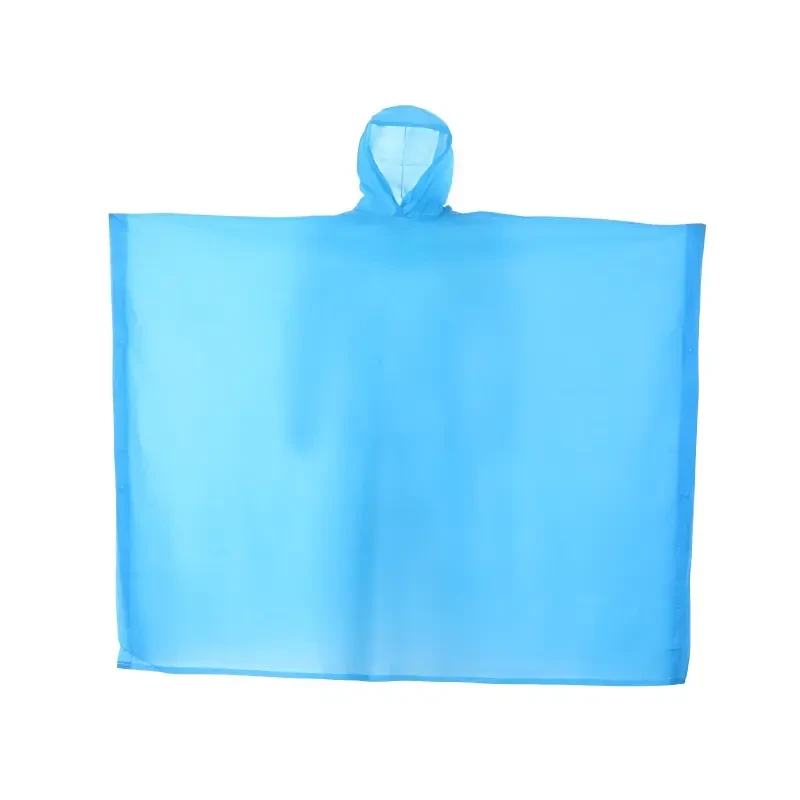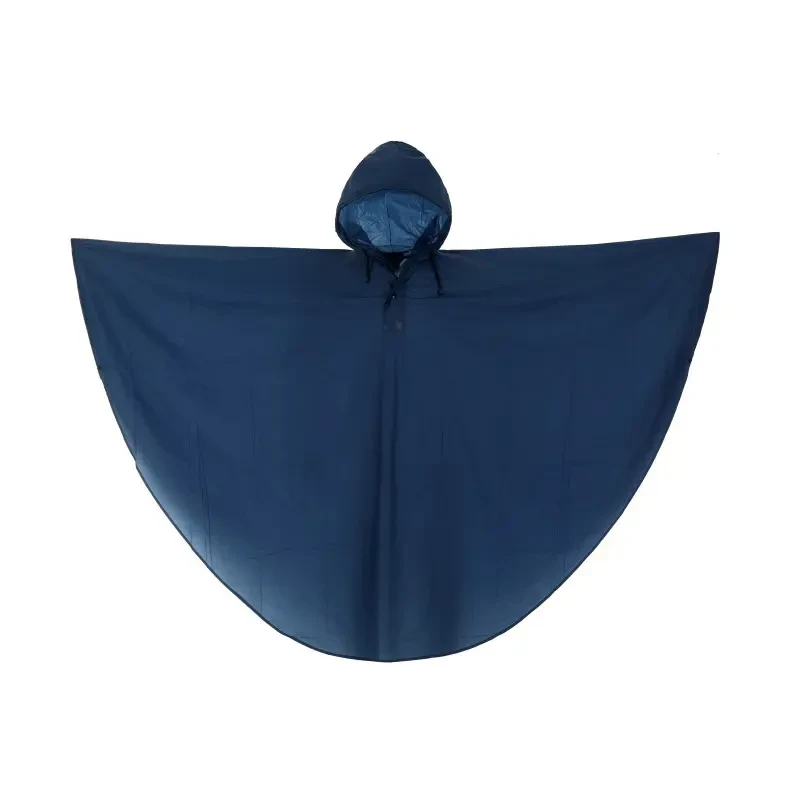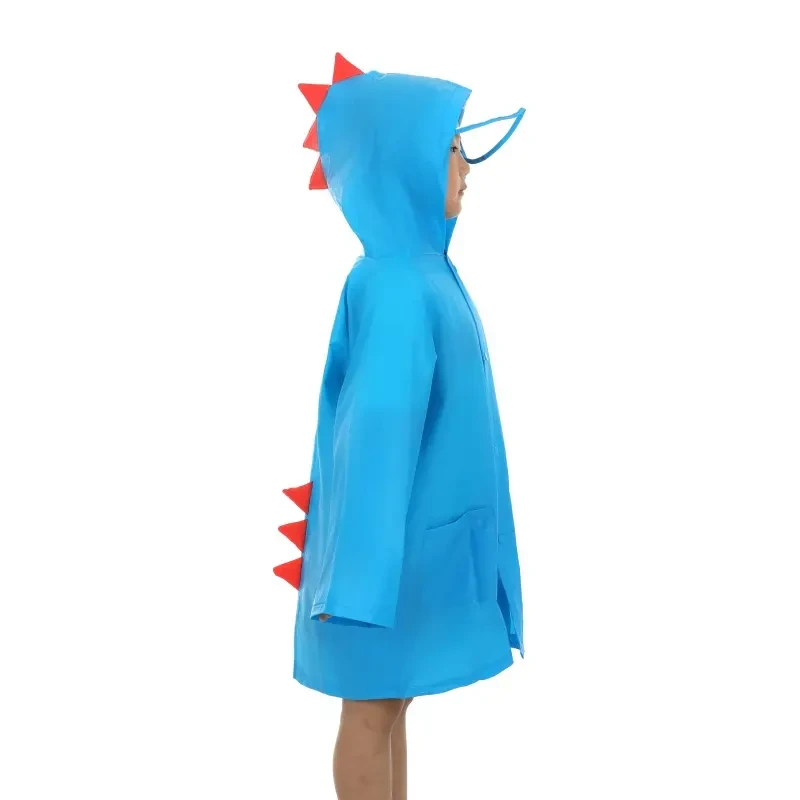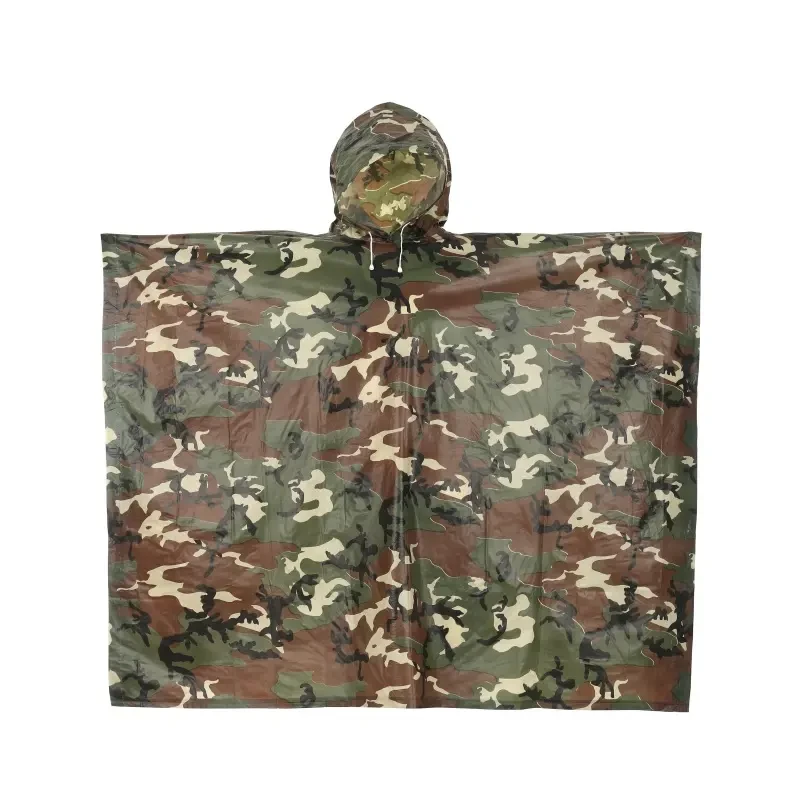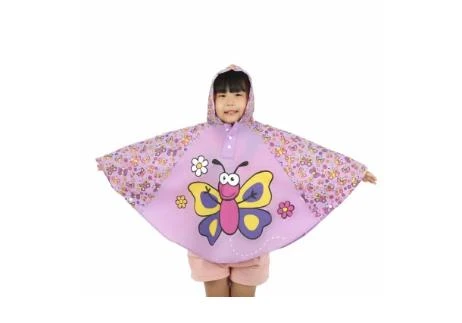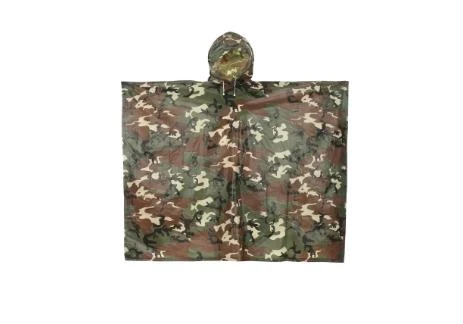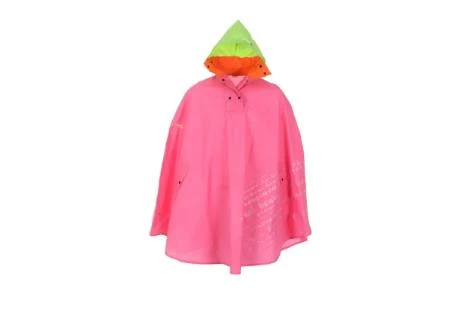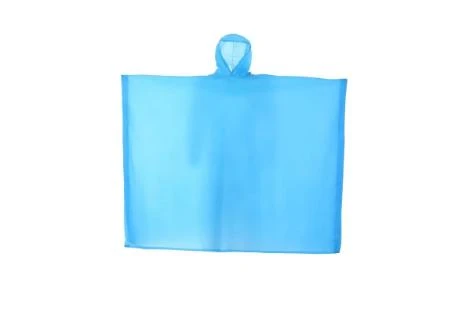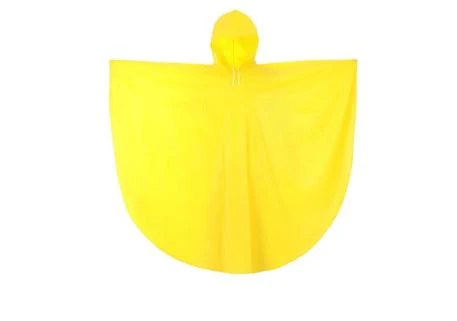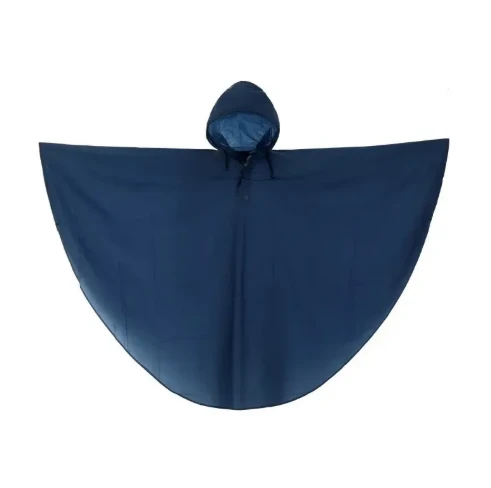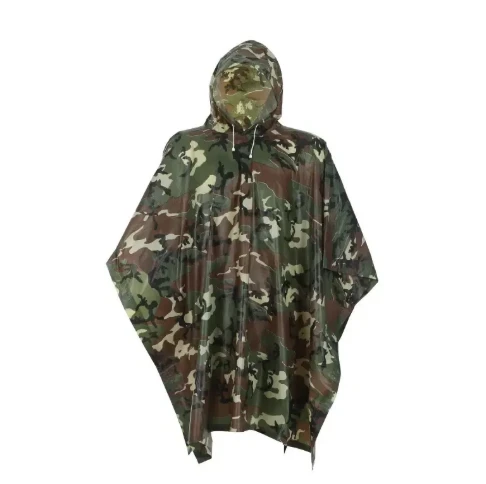آگوست . 19, 2025 06:00
Navigating the Evolving Landscape of Children's Rainwear: Industry Trends and Innovations
The global market for children's rainwear, particularly for products like the childs rain poncho, is experiencing dynamic shifts driven by escalating consumer demand for durable, safe, and environmentally conscious solutions. Recent industry analyses indicate a sustained growth trajectory, with projections emphasizing the increasing significance of materials innovation and sustainable manufacturing practices. Parents and educational institutions are increasingly prioritizing products that not only offer superior waterproof protection but also comply with stringent safety standards, such as OEKO-TEX Standard 100 certification for textile products, ensuring the absence of harmful substances. This trend is further amplified by a growing awareness of environmental impact, pushing manufacturers towards recycled, biodegradable, or sustainably sourced materials like RPET (recycled polyethylene terephthalate) and bio-based EVA. Furthermore, advancements in textile engineering have led to the development of lightweight yet highly robust fabrics with enhanced hydrostatic head ratings, signifying their capacity to withstand significant water pressure without leakage. This focus on performance, coupled with a demand for ergonomic designs that facilitate ease of movement and storage for active children, defines the contemporary market landscape. As educational programs increasingly incorporate outdoor learning and recreational activities, the utility and necessity of reliable childrens rain poncho solutions become paramount, driving demand for bulk procurement by schools, daycare centers, and outdoor adventure organizations. The integration of smart features, such as reflective elements for enhanced visibility in low-light conditions, also represents a notable technical advancement addressing modern safety concerns, positioning manufacturers at the forefront of product innovation in a competitive global market.
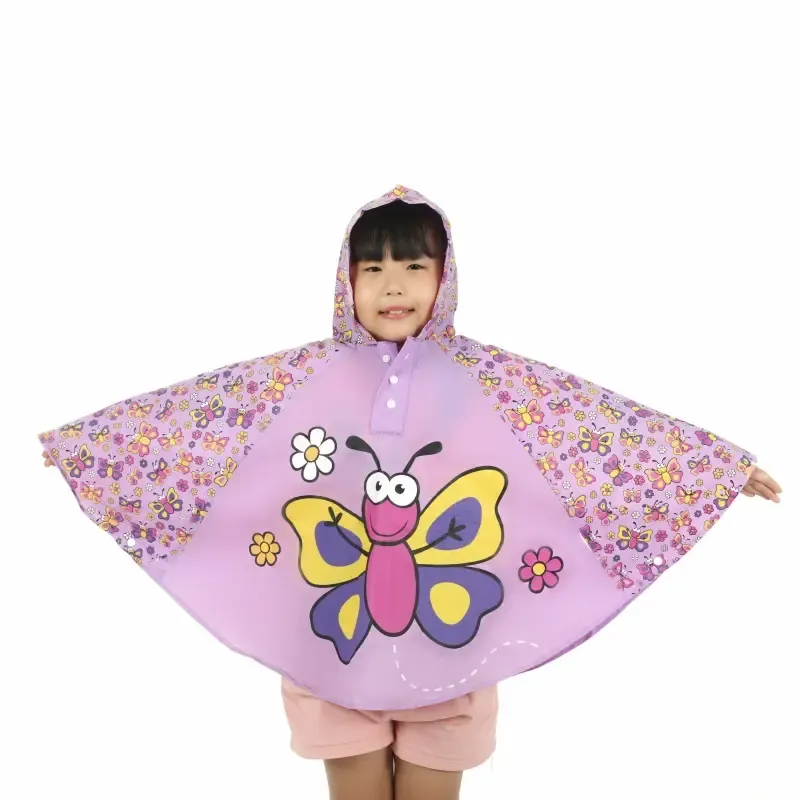
Beyond material science, market trends reveal a significant shift towards customization and branded solutions in the B2B segment. Educational institutions and event organizers frequently seek custom-designed childs rain poncho units featuring specific colors, logos, or thematic patterns, not only for practical utility but also as a cohesive branding or promotional tool. This demand necessitates agile manufacturing processes capable of accommodating diverse order specifications, ranging from small-batch custom runs to large-scale bulk productions. Moreover, the emphasis on product longevity and ease of maintenance continues to be a critical factor influencing purchasing decisions; a durable children's waterproof poncho that can withstand repeated use and washing cycles offers superior long-term value compared to disposable alternatives. Suppliers who can demonstrate comprehensive quality control, adherence to international testing standards like ASTM F1868 (for thermal resistance and evaporative resistance of clothing) and AATCC 127 (for water resistance), and a transparent supply chain are increasingly favored. The global supply chain dynamics, including lead times and logistics efficiency, also play a pivotal role, particularly for clients requiring timely delivery for seasonal demands or large-scale events. By understanding these multifaceted trends, from material innovation and safety compliance to customization and logistical excellence, manufacturers can strategically position their childs rain poncho offerings to meet the sophisticated requirements of today's B2B clientele, ensuring product relevance and market leadership.
Technical Specifications and Performance Metrics for Children's Rain Ponchos
Understanding the technical parameters of a childs rain poncho is crucial for B2B procurement decisions, ensuring that the product meets specific performance and safety requirements. Key specifications typically include the material composition, which often ranges from PVC (Polyvinyl Chloride) for robust, economical solutions, to EVA (Ethylene-vinyl acetate) known for its environmental friendliness, flexibility, and non-toxicity, and more advanced PU (Polyurethane)-coated polyesters or nylons for enhanced durability and breathability. The thickness of the material, measured in micrometers (microns) or gauge, directly influences the product’s tear resistance and overall lifespan; a thicker material generally offers greater resilience against abrasions and punctures, critical for active children. Waterproofing is quantified by the hydrostatic head rating, typically expressed in millimeters (mm), indicating the height of a water column the fabric can withstand before water penetrates. For children's rainwear, a rating of 2,000mm to 5,000mm is generally considered suitable for light to moderate rain, while ratings above 5,000mm are indicative of high-performance gear suitable for heavy downpours. Seam construction is another vital technical aspect; heat-sealed seams, often achieved through ultrasonic welding or high-frequency welding, provide a superior waterproof barrier compared to traditional stitching, which can allow water ingress through needle holes unless meticulously taped.
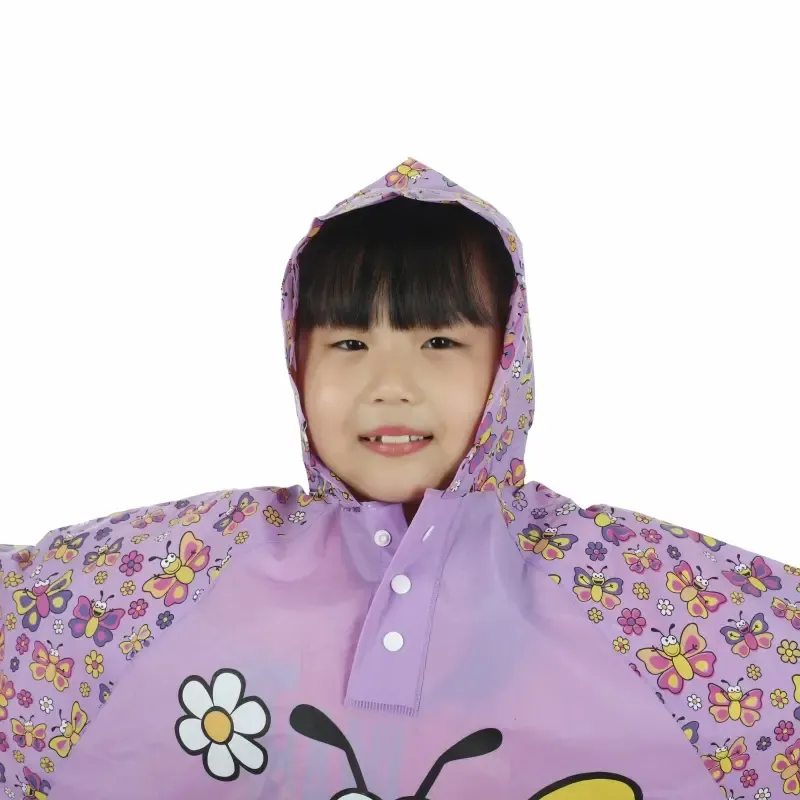
Beyond primary material and waterproofing, secondary technical features significantly enhance the functionality and safety of a childs rain poncho. These include integrated hoods, often with adjustable drawstrings or elasticated edges for a secure fit, and strategically placed reflective strips or piping to improve visibility in low-light conditions, crucial for child safety during school commutes or outdoor activities. The fastening mechanism—whether snap buttons, zippers, or simple pull-over designs—impacts ease of use and overall waterproof integrity. For example, a heavy-duty zipper with a storm flap offers superior protection but might be more challenging for younger children than snap buttons. Furthermore, adherence to international safety standards such as EN 71 (European safety standard for toys, often applied to children's clothing for chemical safety) or CPSIA (Consumer Product Safety Improvement Act) in the U.S. is non-negotiable for B2B buyers concerned with regulatory compliance and consumer well-being. Manufacturers often provide detailed technical data sheets (TDS) outlining these parameters, including material density, tensile strength, tear strength, and resistance to cold cracking (especially important for PVC and EVA in colder climates). This comprehensive understanding of technical specifications empowers procurement professionals to make informed decisions, ensuring the selected children's waterproof poncho reliably performs under various weather conditions and stands up to the rigors of child's play and frequent use.
Childs Rain Poncho: Typical Product Specification Table
| Parameter | Specification Range | Key Benefit for B2B |
|---|---|---|
| Material Composition | EVA (0.10-0.20mm), PVC (0.12-0.18mm), PU-coated Polyester (75D-210D) | Choice of eco-friendliness (EVA), durability (PVC), or lightweight performance (PU-coated Polyester) allows for diverse application suitability and cost optimization. |
| Hydrostatic Head Rating (Waterproofness) | 2,000mm - 8,000mm | Ensures effective protection in varying rain intensities, from light showers to heavy downpours, reducing the risk of water ingress during prolonged outdoor exposure. |
| Seam Construction | Heat-sealed (Ultrasonic/High-Frequency Welding), Taped Seams | Guarantees maximum waterproof integrity by preventing water penetration through stitch holes, enhancing product longevity and reliability in critical conditions. |
| Weight | 100g - 300g (size dependent) | Facilitates portability and ease of carrying for children, making it ideal for school bags, backpacks, and travel; reduces bulk in storage. |
| Safety Compliance | OEKO-TEX Standard 100, EN 71, CPSIA | Assures non-toxicity and safety for children, critical for avoiding regulatory issues and building consumer trust; essential for institutional procurement. |
| Design Features | Integrated Hood, Reflective Strips, Compact Pouch, Snap Button/Zipper Closures | Enhances user comfort, safety (visibility), and convenience (portability), adding value and differentiating the product in competitive B2B markets. |
The Manufacturing Precision: Crafting a Durable Childs Rain Poncho
The production of a high-quality childs rain poncho involves a meticulously controlled manufacturing process, emphasizing precision in material handling, cutting, assembly, and quality assurance. Unlike industrial components that might undergo processes like casting or CNC machining, children's rainwear relies on advanced textile manufacturing techniques. The process typically begins with the careful selection of raw materials, such as virgin or recycled EVA, PVC films, or PU-coated polyester fabrics, chosen based on specified thickness, elasticity, tear strength, and environmental compliance (e.g., phthalate-free, lead-free). Following material inspection, large rolls of fabric are precisely cut using automated machinery, such as laser cutters or CAD-driven CNC cutting tables, ensuring high accuracy and minimal material waste according to designed patterns. This precision cutting is paramount for achieving consistent sizing and optimal fit across bulk orders. The individual pieces are then moved to the assembly stage, where the core waterproofing integrity is established. For EVA and PVC ponchos, this primarily involves heat-sealing, often through high-frequency or ultrasonic welding. This process melts and fuses the material edges, creating a seamless, impenetrable bond that is inherently more waterproof than traditional stitching. For PU-coated fabrics, seams are typically sewn and then critically sealed with waterproof tape applied using specialized heat-press machines, ensuring no water ingress through needle perforations.
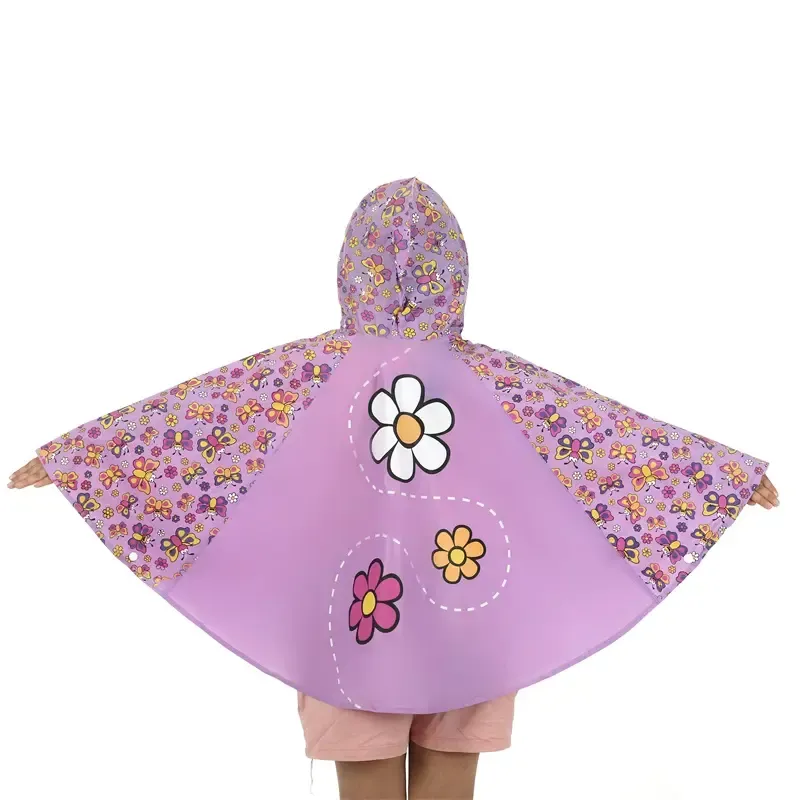
Post-assembly, critical quality control measures are integrated at various stages to ensure each children's waterproof poncho meets stringent industry standards. This includes visual inspections for material defects, uniform sealing, and proper attachment of features like hoods and snap buttons. Functional tests are then conducted, such as hydrostatic head testing on material samples to verify waterproofing performance according to ASTM D751 (Standard Test Methods for Coated Fabrics) or ISO 811 (Textile fabrics -- Determination of resistance to water penetration -- Hydrostatic pressure test). Burst strength tests, as per ASTM D3786, are also performed to evaluate the material's resistance to pressure and sudden impact. For colorfastness and UV resistance, particularly for products intended for prolonged outdoor exposure, tests like AATCC 16 (Colorfastness to Light) may be employed. The service life of a well-manufactured childs rain poncho can range from several seasons to multiple years, depending on the material (e.g., thicker EVA or PU-coated polyester generally offers superior longevity compared to thinner PVC) and usage conditions. In terms of applicable sectors, these ponchos are indispensable for educational institutions (schools, daycare centers for field trips), outdoor recreation providers (camps, adventure parks), retail chains, and even emergency preparedness organizations. Their key advantages in these scenarios include their lightweight portability, rapid deployment during sudden downpours, and cost-effectiveness for bulk distribution, providing reliable protection without the bulk of traditional raincoats. The focus on non-toxic, child-safe materials also ensures alignment with health and safety regulations, a critical concern for all B2B clients serving children.
Strategic Advantages and Manufacturer Differentiation in Children's Rainwear
For B2B buyers, selecting the right manufacturer for a childs rain poncho involves evaluating a complex interplay of technical advantages, production capabilities, and service commitments. A leading manufacturer distinguishes itself through superior material sourcing, leveraging high-grade virgin or certified recycled polymers that offer enhanced durability and safety compliance, such as being phthalate-free or REACH compliant. Technical advantages manifest in the consistent application of advanced seam-sealing technologies, like high-frequency welding, which ensure a 100% waterproof barrier without compromising flexibility or comfort, a common weakness in lower-quality alternatives. Furthermore, the integration of ergonomic design principles, such as child-friendly fastenings (e.g., large snap buttons or easy-pull zippers) and hood designs that offer full head coverage without obstructing vision, significantly enhances user experience and safety. Another key differentiator lies in the manufacturer's ability to offer a broad spectrum of customization options, from precise color matching to PMS (Pantone Matching System) specifications, to the incorporation of intricate logo printing (e.g., screen printing, digital printing, or heat transfer) for branding or promotional purposes. This level of customization allows businesses and institutions to procure childs rain poncho solutions that perfectly align with their brand identity or specific project requirements, reinforcing corporate image and providing a unique value proposition in the market.
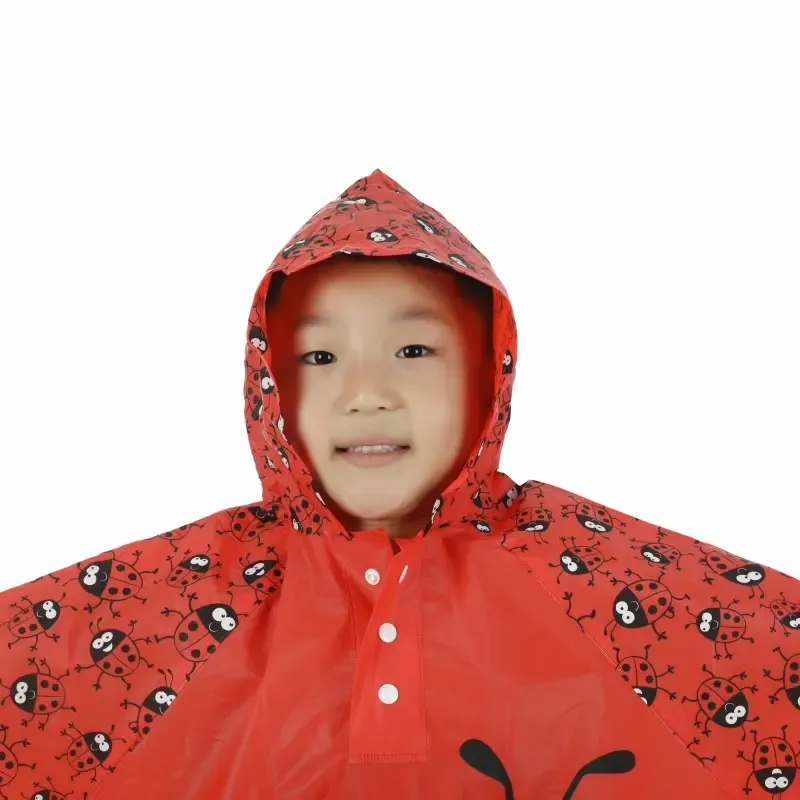
Beyond product features, a reputable manufacturer of children's waterproof poncho products offers robust logistical and support services that are critical for B2B operations. This includes transparent communication regarding production lead times, which are typically between 20-45 days depending on order volume and customization complexity, and flexible shipping solutions (FOB, CIF) to cater to global clients. The capacity for handling large-volume orders (Minimum Order Quantity often starts from 500-1000 units for custom designs) while maintaining consistent quality is a hallmark of an authoritative supplier. Furthermore, comprehensive quality assurance protocols, including pre-shipment inspections and adherence to international quality management systems like ISO 9001:2015, provide a layer of trust and reliability. Manufacturer differentiation also stems from their commitment to post-sales support, offering clear warranty policies against manufacturing defects and responsive customer service for any inquiries or issues. This holistic approach, encompassing superior product engineering, extensive customization capabilities, efficient supply chain management, and unwavering customer support, collectively contributes to a manufacturer's authority and trustworthiness in the competitive B2B rainwear market. When evaluating suppliers, clients should seek evidence of these comprehensive attributes, as they directly impact the long-term value and operational efficiency of their procurement strategy for children's rain gear.
Manufacturer Comparison: Key Differentiators for Children's Rainwear
| Feature/Criterion | Leading Manufacturer (e.g., SXZY Rainwear) | Standard Manufacturer |
|---|---|---|
| Material Quality & Certifications | Virgin/Recycled EVA, PU-coated Polyester; OEKO-TEX, REACH, SGS Tested for Non-toxicity | Standard PVC/EVA; Basic safety compliance or none specified |
| Waterproofing & Seam Technology | Hydrostatic Head > 5,000mm; Advanced Heat-sealed (Ultrasonic/HF Welding) or Taped Seams | Hydrostatic Head 1,500-3,000mm; Stitched seams, sometimes with basic taping |
| Customization Capability | Extensive (Custom colors, logos, sizes, packaging); Low MOQ for prototypes | Limited (Standard colors/sizes); High MOQ for custom designs |
| Production Lead Time | 20-45 days (efficient for bulk orders) | 45-90+ days (prone to delays) |
| Quality Control & Certifications | ISO 9001:2015, AQL standard, Pre-shipment inspection, comprehensive lab testing | Basic internal QC, limited external certifications |
| Customer Support & Warranty | Dedicated account manager, responsive support, clear warranty on defects, sample policy | Limited support, unclear or no warranty |
Application Scenarios and Tailored Solutions for Children's Rain Ponchos
The versatility and portability of a childs rain poncho make it an indispensable asset across a multitude of application scenarios, particularly within the B2B context where bulk procurement is common. Educational institutions, from kindergartens to elementary schools, represent a primary market. For school trips, outdoor learning initiatives, and daily commutes in unpredictable weather, a lightweight, easy-to-wear children's waterproof poncho provides essential protection, ensuring children remain dry and comfortable without the encumbrance of heavier rain gear. Schools frequently require customized solutions featuring their logo or specific school colors, transforming the poncho into a practical uniform component and a subtle branding tool. Similarly, outdoor activity providers, including summer camps, scout organizations, and adventure tour operators, rely on these ponchos for their robustness and rapid deployment. In these settings, durability and tear resistance are paramount, given the dynamic and often rugged environments. Event organizers, from music festivals to sporting events and community gatherings, also represent a significant segment, providing ponchos as part of a participant kit or selling them as emergency rain protection, often branded with event logos. The ease of distribution and minimal storage requirements make them an ideal choice for large-scale events where quick weather changes can impact participant experience.
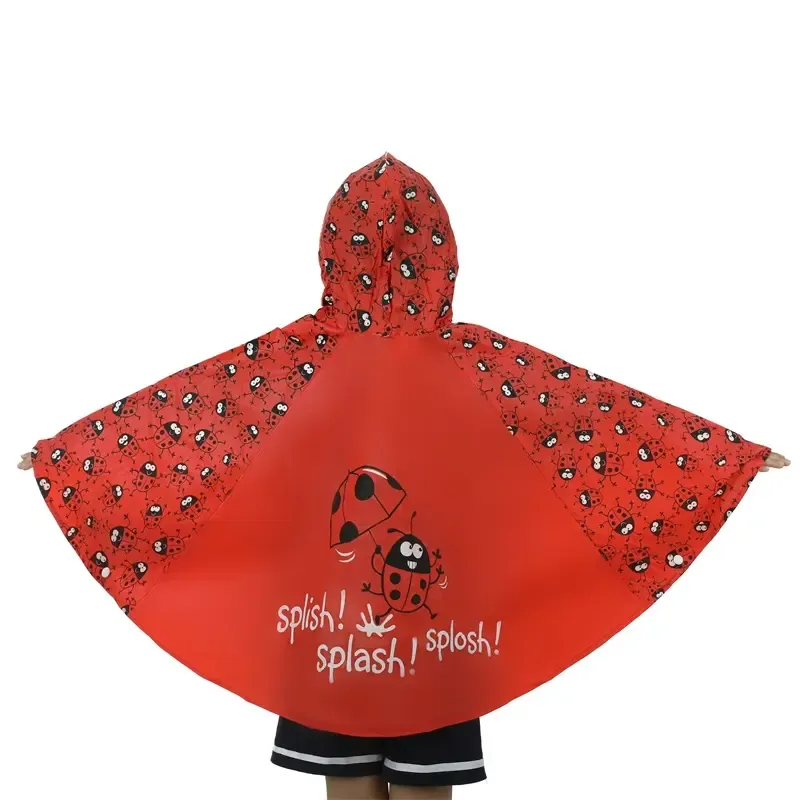
Beyond these common uses, tailored solutions for childs rain poncho procurement extend to retail chains seeking private-label products, emergency preparedness agencies distributing supplies to vulnerable populations during natural disasters, and even corporate promotional campaigns targeting families. For retail, customization might involve unique packaging, multi-packs, or exclusive designs aligned with seasonal collections. Emergency preparedness units prioritize high volume, compact storage, and potentially enhanced safety features like high-visibility colors or reflective detailing to ensure children are easily spotted in chaotic environments. The advantage of a poncho in these varied scenarios is its simplicity; it can be quickly donned over existing clothing and backpacks, providing immediate protection. This operational efficiency is highly valued in settings where speed and ease of use are critical. Furthermore, the capacity to provide a children's rain poncho that is both economically viable for bulk purchase and adheres to stringent safety and environmental standards (e.g., non-toxic materials, phthalate-free) allows businesses and organizations to align their procurement with their corporate social responsibility initiatives. Collaborating with a manufacturer capable of delivering comprehensive customization options, coupled with reliable logistics and a commitment to quality, ensures that these diverse application requirements are met with precision and effectiveness, bolstering the client's operational resilience and brand reputation.
Ensuring Trust and Reliability: Guarantees and Support for Your Childs Rain Poncho Investment
Establishing trust and ensuring reliability are paramount for B2B clients when investing in a substantial order of childs rain poncho units. A reputable manufacturer underpins this trust through robust quality assurance, transparent delivery protocols, and comprehensive after-sales support. Quality assurance isn't merely a final check; it's integrated throughout the production cycle, from raw material inspection (e.g., verifying certifications for EVA or PVC batches) to in-process checks on seam integrity and final product testing. Many leading manufacturers adhere to international quality management standards like ISO 9001:2015, which signifies a commitment to consistent quality and continuous improvement. This is often complemented by third-party inspection services, ensuring an unbiased assessment of product quality before shipment. Regarding delivery, clear communication of lead times—typically 20-45 days for custom or bulk orders, depending on order complexity and production schedules—is essential. Manufacturers should also provide flexible shipping options (e.g., FOB, CIF, DDP) to accommodate various logistical needs and budgets of global clients, along with precise tracking information to ensure timely arrival, which is particularly critical for seasonal demand or scheduled events. This logistical transparency minimizes uncertainties and allows B2B buyers to plan effectively for distribution and deployment of the children's waterproof poncho stock.
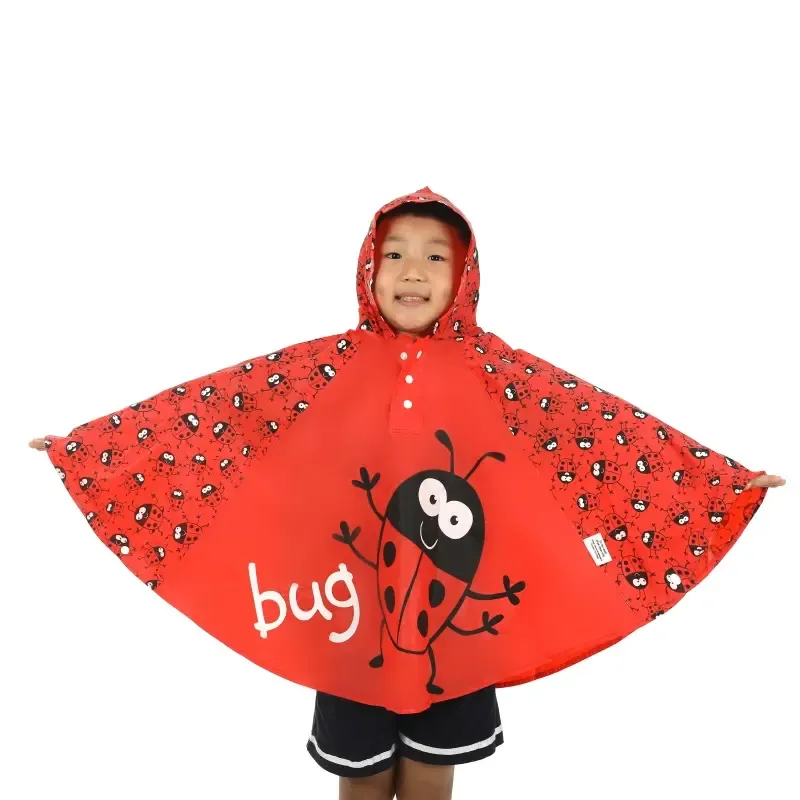
Beyond production and delivery, the true measure of a manufacturer's trustworthiness lies in their post-sales commitment. A comprehensive warranty for manufacturing defects, typically ranging from 6 to 12 months, provides significant peace of mind for B2B clients, safeguarding their investment against unforeseen product issues. This warranty should explicitly cover faults in material or workmanship, reassuring buyers of the product's quality and durability under normal usage conditions. Furthermore, responsive customer support is crucial for addressing any inquiries, logistical challenges, or feedback post-delivery. This includes dedicated account managers, technical support teams, and clear channels for communication. In addition, providing a detailed FAQ (Frequently Asked Questions) section regarding product care, storage, and potential troubleshooting offers immediate value to end-users and bulk distributors alike. Common questions include recommended cleaning methods for different materials (e.g., wiping EVA with a damp cloth vs. gentle hand wash for PU-coated polyester), proper storage to prevent mildew or material degradation, and considerations for reflective strip longevity. This proactive approach to customer service, combined with tangible guarantees like quality certifications and clear warranty policies, solidifies a manufacturer's reputation as a reliable and authoritative partner in the supply of childs rain poncho solutions, fostering long-term collaborative relationships built on trust and mutual success.
Frequently Asked Questions (FAQ) for Childs Rain Ponchos
-
Q1: What is the typical lifespan of a children's rain poncho?
A1: The lifespan varies based on material and usage. High-quality EVA or PU-coated polyester ponchos, with proper care, can last several years of regular use. Thinner PVC options are typically designed for shorter-term or emergency use, often lasting 1-2 seasons. -
Q2: Are your ponchos environmentally friendly?
A2: We offer options made from eco-friendly materials like biodegradable EVA and RPET (recycled PET). Our commitment includes minimizing environmental impact throughout the manufacturing process, ensuring compliance with relevant environmental standards. -
Q3: What safety standards do your children's rain ponchos adhere to?
A3: Our products comply with stringent international safety standards, including OEKO-TEX Standard 100 for harmful substances, EN 71 (European Toy Safety Directive), and CPSIA (Consumer Product Safety Improvement Act) for lead and phthalate content. -
Q4: What is your typical production lead time for bulk orders?
A4: Standard lead times for bulk orders generally range from 20 to 45 business days, depending on the volume, material availability, and level of customization required. Expedited options may be available upon request. -
Q5: Do you offer customization for school or corporate branding?
A5: Yes, we specialize in comprehensive customization options, including specific material choices, custom sizing, PMS color matching, logo printing (screen print, digital print, heat transfer), and bespoke packaging solutions to meet your branding and promotional needs.
References
- ISO 9001:2015. Quality management systems — Requirements. International Organization for Standardization.
- ASTM D751. Standard Test Methods for Coated Fabrics. ASTM International.
- OEKO-TEX Standard 100. Product Class I criteria for textile articles for babies and children up to 3 years. OEKO-TEX Association.
- AATCC 127. Water Resistance: Hydrostatic Pressure Test. American Association of Textile Chemists and Colorists.
- CPSIA. Consumer Product Safety Improvement Act of 2008. United States Congress.
- EN 71-3. Safety of toys — Part 3: Migration of certain elements. European Committee for Standardization.
 Pervious
Pervious
This is the first article
Related Products
Related News
